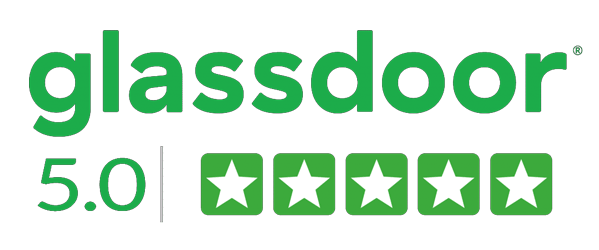
What is the impact of HR automated systems on handbook writing?
In today’s fast-moving business world, HR departments are continually seeking ways to streamline processes, enhance employee experiences, and maintain compliance with changing regulations.
One of the areas profoundly affected by technological advancements is the creation and management of employee handbooks. The shift towards HR automation has brought about a paradigm shift in how employee handbooks are conceptualized, developed, and maintained.
What Is an Employee Handbook?
An employee handbook is like a detailed guidebook for everyone working in a company. It explains the rules, procedures, and expectations. This is where both bosses and employees can find information about how things work, like behaving right, getting benefits, taking time off, and more. It’s not just for workers to know their rights and duties; it also helps bosses keep things fair and clear.
What Is HR Automation?
HR automation involves the use of technology and software solutions to streamline and optimize various HR processes and tasks. These processes may include recruitment, employee onboarding, payroll management, time and attendance tracking, performance management, and more.
One clear impact can be seen in the way employee handbooks are now made. In the past, these handbooks were fixed documents made on paper and manually changed when policies were updated. This took a lot of time, had a risk of mistakes, and often led to outdated information reaching employees.
Automated HR systems have transformed this process by offering a flexible platform to create, share, and update handbooks. By implementing HR automation, organizations can reduce manual and repetitive administrative work, minimize errors, enhance efficiency, and allocate resources more strategically.
Benefits of Automation on Handbook Writing
Customization
Each business has its unique requirements and policies. HR Automation systems allow you to tailor the handbook to match the organization’s unique culture, industry, and practices.
Many organizations have diverse employee groups, including full-time employees, part-timers, contractors, and remote workers. Automated systems can create tailored handbooks for each group, ensuring that relevant policies and information are presented based on their employment status and location.
HR professionals can also easily add, edit, or remove sections based on the organization’s specific needs. This enables the handbook to reflect the company’s brand identity, values, and approach to employee engagement.
Accessibility and Efficiency
Online automated HR systems offer a centralized digital platform that makes the handbook easily accessible to employees from anywhere and at any time, particularly for remote workers or teams spread across different locations, ensuring they can quickly reference policies and procedures without the need for physical copies.
Employees can readily access the handbook on demand, reducing the need to contact HR for policy clarifications. This not only saves time but also optimizes HR teams, enabling them to focus on more strategic initiatives, employee engagement, and other tasks that add greater value to the organization.
Automated systems can also offer language translation. If you work with clients in different regions or with diverse language needs, these systems can facilitate the translation of handbooks into multiple languages, which is valuable in a globalized workforce.
By smoothly integrating handbook information into onboarding modules, HR systems make sure new hires receive consistent training, helping them better understand company policies.
Real-Time Updates
Automation allows for instant updates to employee handbooks. When policies change or new regulations are introduced, HR professionals can swiftly modify the handbook content, ensuring that employees always have access to the most current information.
Unlike traditional manual methods that involve printing and distributing physical copies, automated systems ensure that the latest policies are immediately accessible to employees. This reduces the risk of outdated information being followed and helps the organization stay compliant with current laws.
In the recruitment field, temporary and contract staff are common. Automated systems make it easier to create temporary or project-specific handbooks that cover the essential information these employees need while they are on board.
Legal Compliance
Staying compliant with labor laws and regulations is crucial for both your business and your clients. Automated HR systems often come equipped with compliance features that help HR professionals align the handbook with current laws and regulations.
These systems can flag potential legal issues or conflicts, ensuring that policies are accurate and legally sound. By reducing the risk of non-compliance, organizations can avoid costly legal disputes and penalties.
Tracking and Reporting
Automation enables better tracking of employee acknowledgment and acceptance of handbook policies. HR professionals can monitor who has reviewed the handbook and track when changes were made. This is essential for demonstrating that employees have been informed about and agreed to the policies outlined in the handbook.
Additionally, automated reporting features provide insights into trends in policy acceptance and understanding, allowing HR to address potential areas of confusion or resistance.
Data Security and Privacy
Automated systems prioritize the security and privacy of sensitive employee information contained within the handbook. These systems implement robust safeguards, such as encryption and access controls, to protect data from unauthorized access, breaches, or leaks.
This ensures that personal details, performance records, salaries and confidential policies remain safe and are only accessible to authorized personnel.
As a result, employees can trust that their personal information is handled with the highest level of security, fostering a culture of confidentiality and safeguarding the organization’s reputation.
Client Engagement
As an HR and recruitment agency, we not only create handbooks but also educate clients about HR best practices. HR automated systems allow informative sections within handbooks, explaining policy rationales and deepening client understanding.
These automated systems enhance collaboration between client and agency during handbook creation. Clients can actively contribute, review drafts, and suggest modifications, leading to fostering a strong partnership.
Challenges You May Consider
While the benefits of automated systems on handbook writing are substantial, it’s essential to acknowledge the challenges and considerations that accompany this shift.
1. Technical Proficiency. HR professionals and content creators need to be well-versed in using the automated system’s interface and tools to ensure effective handbook management.
2. Human Touch. While automation brings efficiency, it’s crucial to maintain a human touch in the handbook’s tone and content. Avoiding excessive jargon and maintaining clarity is essential for effective communication.
3. Change Management. Transitioning from traditional handbook creation to automated systems requires change management efforts to ensure all stakeholders adapt smoothly.
4. Data Security. As handbooks are stored digitally, robust cybersecurity measures must be in place to safeguard sensitive employee information.
5. Cost Considerations. Implementing and maintaining an HR automated system comes with costs, including software licenses, training, and ongoing support.
Balancing Formality and Casualness
The tone and style of employee handbooks play a significant role in conveying information effectively. Finding the right mix of formal and casual is key, and it depends on what we’re talking about and the situation.
In formal sections discussing company policies, benefits, and compliance, maintaining a professional and authoritative tone is paramount. This ensures that employees understand the gravity of these matters and perceive them as official company guidelines.
Conversely, in sections relating to employee engagement, company culture, and well-being, adopting a more casual and approachable tone can foster a sense of camaraderie and connection. Stories, anecdotes, and relatable language can make these sections more relatable and resonant with the workforce.
Empower Your HR Practices Through Automation.
If your company still relies on manual procedures and hasn’t embraced automation, maybe it’s time to think about making the switch. While there may be an initial investment in setting up an automated system, the long-term cost savings are significant.
By using automation, companies can reduce administrative tasks, minimize printing and distribution costs, ensure compliance, reduce legal expenses, streamline onboarding processes, and free up their HR to focus on people-oriented tasks.
As we move ahead with technology, these changes show how innovation can make work smoother and keep everyone informed and secure.
Find the right HR business partner for your business on Clutch.


